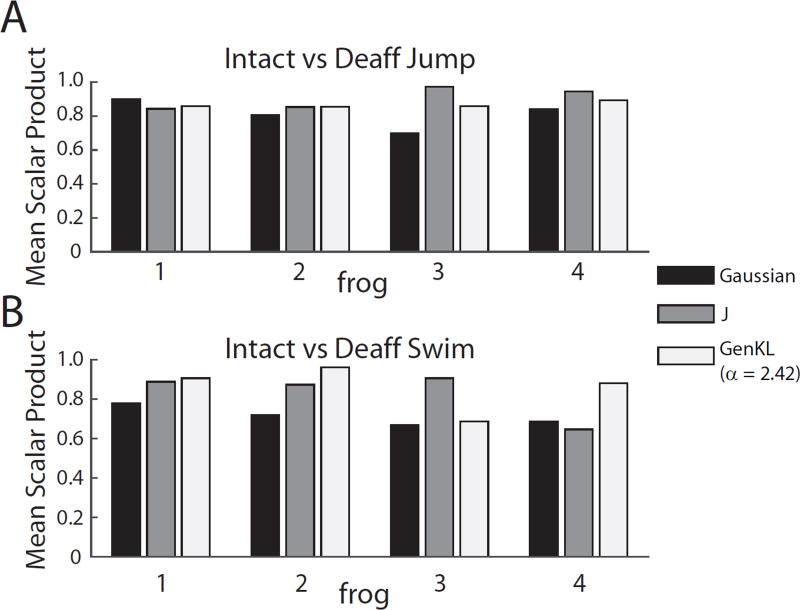Figure 2.
The GenKL algorithm (α = 2.42) outperformed the Gaussian, and performed similarly well as the J algorithm. Performance of each algorithm was indicated by the similarity between the intact and deafferented muscle synergies, quantified by the best-match scalar product averaged across the synergy set of each frog (3 synergies for jump, and 4 synergies for swim). A, For jump, in all four frogs performance of the GenKL algorithm was comparable to that of the J in finding synergies that persisted after deafferentation, one of the best-performing algorithms in our previous study (Devarajan & Cheung, 2014). B, For swim, in three out of four frogs GenKL performed comparably well or even better than J.

